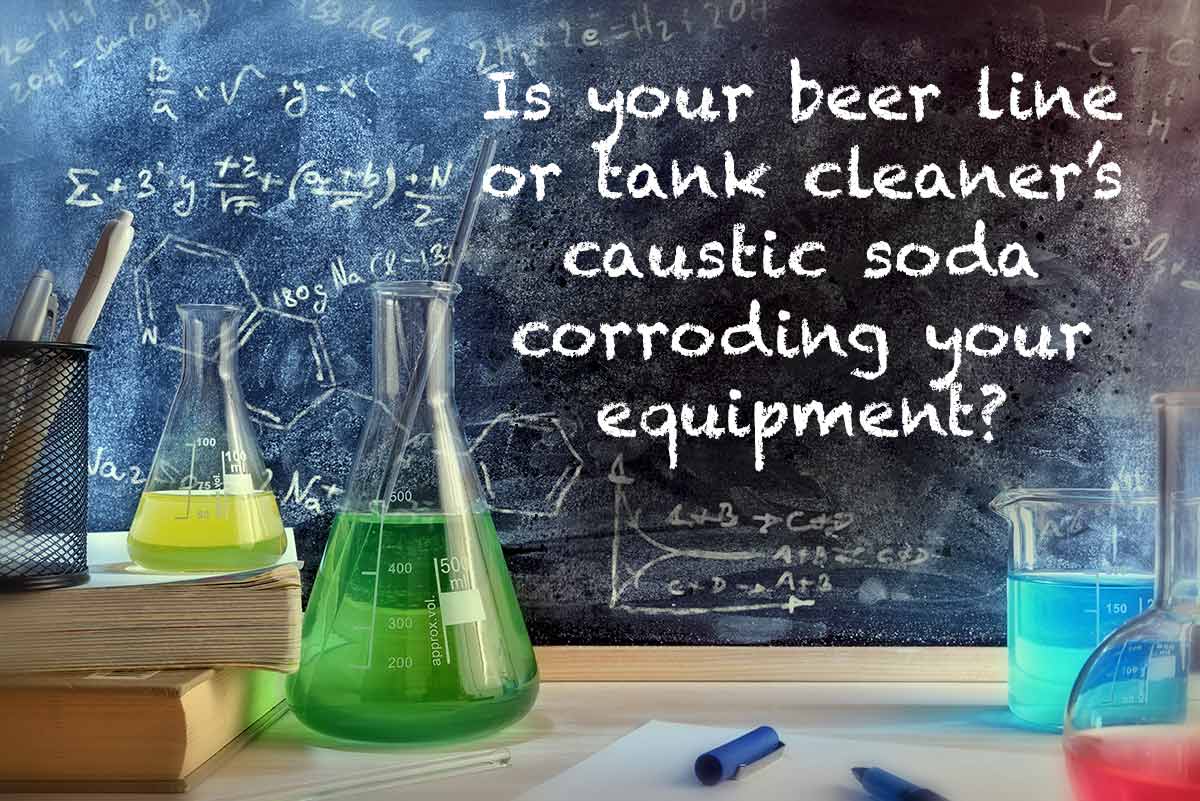All Caustic Sodas Are Not Created Equal
/“To be or not to be Caustic Soda - now THAT is the question.”
Caustic Soda, sodium hydroxide, or lye is an interesting, strong base. It is used as a vital, principal constituent in many industries for a variety of reasons and uses:
Pulping and bleaching in the paper industry,
Processing cotton and dying synthetic fibers in the textile industry,
Processing petroleum and natural gas for petroleum products,
Also, in soap for saponification and detergents where it is a crucial component in most effective detergents and cleaning products, such as Draftec®️ and Master BrewTec®️.
But, is all caustic soda the same or are there significant differences?
Caustic soda solutions and grades are usually produced as a co-product with chlorine electrolytically. Typically, this is using one of three technologies, such as 1) Mercury cells, 2) Membrane cells, and 3) Diaphragm cells. We will briefly describe each of these technologies as it is essential to appreciate the purity of the caustic soda produced and the level of contaminants expected. Since the starting material utilizes sodium chloride (or NaCl), it is reasonable to expect contaminants such as unreacted salt (or NaCl), sodium chlorates (or NaClO3), sodium carbonates (or Na2CO3), and sodium sulfates (or Na2SO4). Depending on how the caustic soda is produced, different tank or line products will have different levels of chlorides. This is important because of the potential risk of chloride stress corrosion over time, particularly around welds in stainless steel lines or vessels when high levels of chlorides might be present during repeated cleaning cycles.
Mercury Cell or Rayon Grade
This production method for Caustic soda uses mercury as the cathode for the electrolytic reaction. There is no net consumption of mercury in the reaction, and this process produces the highest purity caustic soda (lowest level of contaminants) commercially available. Typically, 50 - 52% by weight NaOH can be directly generated from the mercury cell without the need for further evaporation. Mercury cell produced caustic soda is typically referred to as Mercury Cell Grade or Rayon Grade.
Diaphragm Cell Grade
This process for producing Caustic soda has traditionally used asbestos (now uses safer, alternative substitutes) to separate the co-products, caustic soda and chlorine. This method typically provides a weak “cell liquor” (typically 12-14% by weight) and, therefore, subsequent evaporation is used (utilizing a three or four effect evaporation process) so that a reasonable final concentration of caustic soda, i.e., circa 50% is reached. This process produces the lowest quality electrochemical caustic soda solutions. This grade of caustic soda is referred to as Diaphragm Cell Grade, Commercial Grade, Technical Grade, and sometimes Technical Diaphragm Grade. An additional grade from this process, whereby evaporation is further used to reduce the salt concentration is called “Purified Grade.”
Membrane Cell Grade
This process for producing caustic soda uses selective membranes designed to separate chlorine and sodium ions. These membranes allow migration of sodium ions across the membrane keeping the chlorine gas and brine on the other side of the membrane. The sodium ions react with water in the mercury cell to produce the caustic soda which is typically 33-35% by weight. Evaporation is used, similar to the diaphragm method, to push the caustic concentration to around 50% by weight. It should be noted that small quantities of salt can migrate across the membrane elevating the final level of “contamination.” This caustic is typically referred to as Membrane Grade.
Your friends at Draftec®️ want you to have the very best cleaning experience with your expensive equipment. We believe that the more fact-based knowledge we share with you, the more likely you are to make the best decision in the products you choose to use. As you all know, we take the most comprehensive measures to assure “clean beer.” In fact, we are delighted to be uniquely associated with this terminology. We, therefore, pride ourselves in our knowledge and the ultra high quality of the caustic soda used in our benchmark products! We hope you agree and, particularly over repeated use, you realize that this makes a visible and valuable difference!
Draftec®️ - Clean Once, Clean Right!
A free sample of Draftec's beer line cleaner is available for professional line cleaners and beer distributors. To request a sample, please email us at info@draftec.com or call us at (888) 226-8228.


